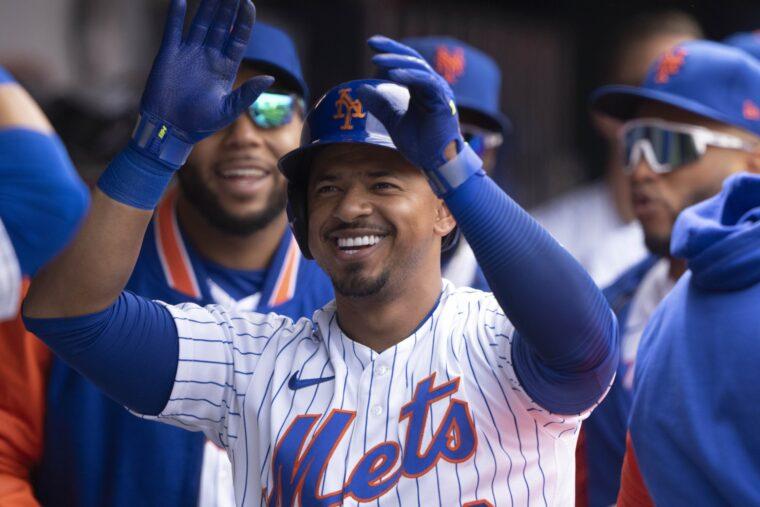
Gregory Fisher-USA TODAY Sports
From the day the Mets signed Eduardo Escobar just before the lockout began, people around the game touted Escobar as a great teammate and clubhouse leader. Max Scherzer even cited Escobar as one of the many reasons he wants to come to New York.
Escobar quickly endeared himself to teammates with a trip to Fogo De Cho on his dime during spring training, and he allegedly masterminding the heartwarming gesture to custom order t-shirts brandishing the name of reserve outfielder Travis Jankowski after Jankowski described himself as the type of player whose jersey would not be popular among fans.
Given the plethora of feel-good stories the Mets’ third-basemen has generated already in his short time in Flushing, you would be forgiven for missing one very large part of the Escobar equation: he is a pretty darn good player.
In fact, despite struggling somewhat to start his Mets career, a look at the stats on the back of Escobar’s baseball card show that he has been a pretty consistent power threat since 2017, which was the first season that he really first established himself as an everyday contributor. Indeed, in his last two full seasons, with Arizona in 2019, and Arizona and Milwaukee in 2021, Escobar totaled 35 and 28 home runs and 118 and 90 RBI, respectively.
Even amid a frustrating offensive start to his Mets’ tenure, Escobar has seemingly had a knack for driving in big runs, and that trend continued on Monday night in San Diego.
In the first inning with the bases loaded and two outs, and talented Padres’ starter Blake Snell laboring but sniffing a potential path out of a long first inning, it was Escobar who poked a line-drive single to right field, scoring two runs in a game the Mets would never trail. Escobar, who was batting right-handed against the southpaw Snell, has fared much better as a right-handed hitter than a left-handed hitter this season. Escobar was just getting started.
The #Mets forced Padres’ starter Blake Snell to throw 43 pitches in the first inning.
A huge walk by J.D. Davis and the below Eduardo Escobar single punctuated New York’s terrific start to the game.
3-0 #Mets, bottom 1.pic.twitter.com/hMs0x4eTOD
— Metsmerized Online (@Metsmerized) June 7, 2022
In Escobar’s next at-bat, this one also right-handed, he drilled a double to the left-center field gap, and came around to score on a Brandon Nimmo single. In his first left-handed at bat of the night, Escobar attacked a first pitch fastball, but skied it to second base for an easy out. The frustration on the face of the normally jubilant Escobar was apparent – he has not been able to get on track from that side of the plate.
That made what happened in his next at-bat that much more special. In the eighth inning, Escobar drilled a long two-run home run to right filed of right pitcher Craig Stammen. The home run ball traveled 405 feet after Escobar struck it with a 106.8 exit velocity and 36 degree launch angle. Escobar stayed in the batter’s box a bit and admired his beautiful drive. It was obvious that Escobar felt a swing like that was a long time coming.
After the Padres inched closer, Escobar put their thoughts of a comeback to rest, lining a two-run triple down the right field line off of left handed reliever Tim Hill for his fifth and six runs batted in of the night. In the process, Escobar became the first Met to hit for the cycle since Scott Hairston did it at Coors Field in 2012, and the eleventh player in franchise history to do it. He kept the ball from his triple.
In all, Escobar finished the game with four hits in five at bats. Escobar drove in six runs and scored three in a night where the Mets scored 11 runs as a team. If that sounds like an extraordinarily good night at the plate, it is because it is. Escobar’s stat line from Monday night has only been matched 20 other times in Major League history, as Jacob Resnick points out. Perhaps most importantly for the Mets’ near-term outlook, Escobar got it done from both sides of the plate. He now has a 1.092 OPS and 10 RBIs over his last seven days.
The Mets surely hope this is a sign of things to come for their popular third-baseman.















